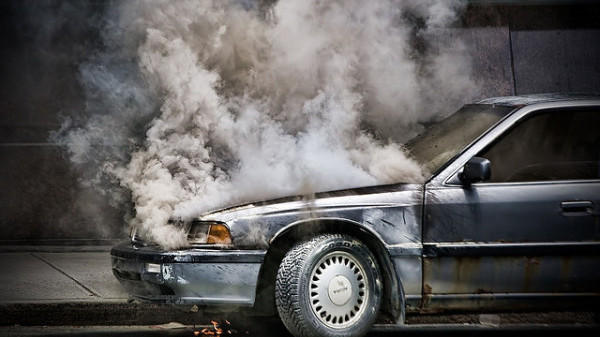Temperatures around Boise will hit 106 degrees today and even higher tomorrow, with triple-digits forecast for the rest of the week. That kind of heat puts extreme stress on an engine and this is a good time to think about getting your engine checked out.
You definitely don't want to be one of the motorists on the side of the road, hood open

Catastrophic overheating happens all the time in hot weather.
and steam and fumes pouring out. An auto engine runs optimally at 200 degrees Fahrenheit and produces a great deal of heat. Overheating will destroy it within minutes.
In the depths of winter, when it is the teens and single digits, an engine may run just fine without a cooling system! Most of the time, though, a cooling system is essential to keep the engine within operating temperatures. The higher the outside temperature, the less margin of error there is and the faster heat will damage your engine. The cooling system consists of the radiator, water pump, cooling fan and thermostat and all must we working perfectly to protect the engine.
Pile on extreme heat and a faulty radiator and that could mean serious problems. Or , the radiator could be working fine, but the belt to the cooling fan broke, so the engine doesn't get ventilated. Coolant is designed to protect an engine to a point, but it can also become compromised under high heat. Boiling coolant may cause the radiator and hoses to burst.
Here are some practices to keep your engine from overheating:
1. Make sure coolant levels are maintained and there are no leaks that would cause coolant to drip out. Check your garage floor or other regular parking spot and look for greenish coolant.
2. Dirty, old motor oil cannot dissipate heat as well as clean oil. Check the oil level and viscosity. Change the oil before a long trip or if it looks dirty.
3. Confirm radiator hoses are in good working order and do not look worn out. Bulges, cracks fraying are signs the hoses are at risk.
4. Have us check that the radiator fan is working and that there is adequate air flow through the radiator.
5. When driving in hot weather, frequently glace at the temperature gauge or warning light. The needle on the temp gauge should always be right at the middle position between H and C, or maybe a bit below the middle position. If the needle rises higher than the midpoint, shut off the air conditioner and stop pushing the engine so hard (i.e., reduce speed, especially going uphill, and get to a repair shop as soon as you can. If the warning light goes off, you are in immediate danger of losing your engine so pull over right away and get a tow.
If an engine seems like it's about to overheat, here are some steps to take.
* Slow down and pull to the right. Turn on the heat in the car, as this will drain heat from the engine. Open the windows and drive slowly, to continue to draw air over the engine.
* After you have stopped, open the hood to allow the engine to cool.
* Carry radiator coolant with you (or water can work in a pinch) and top off the radiator with coolant. Never open the radiator cap when the engine is hot. Most cars will require you to replenish the coolant through a whitish plastic reservoir.
* Take frequent breaks during long road trips to allow the engine to cool down for at least 15 minutes.
* Be sure to clear the radiator from obstructions, including leaves or insects that may have collected.
At Plantation, we are an authorized seller of BG Products. BG coolant is specially formulated to provide better service, particularly in hot weather.